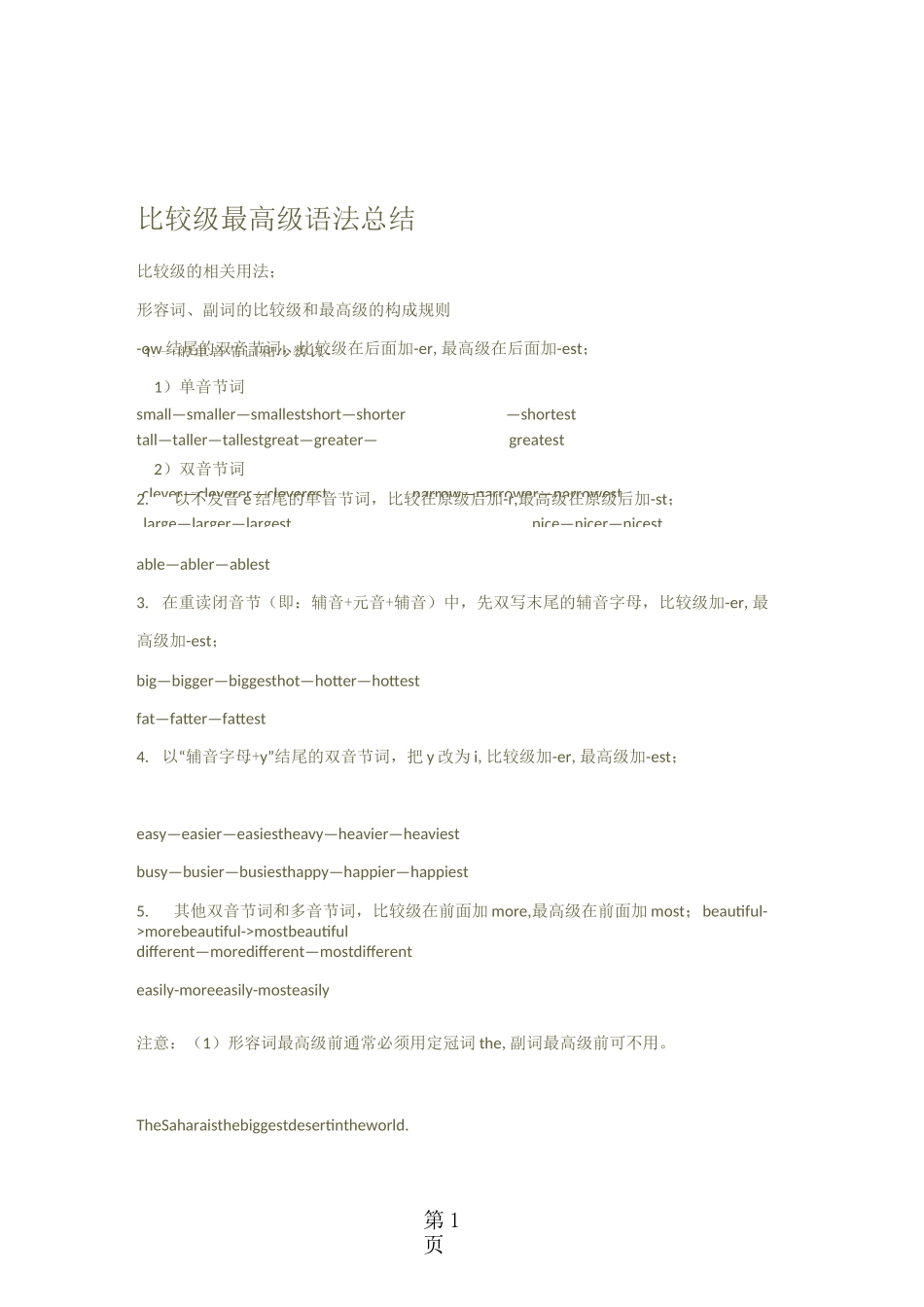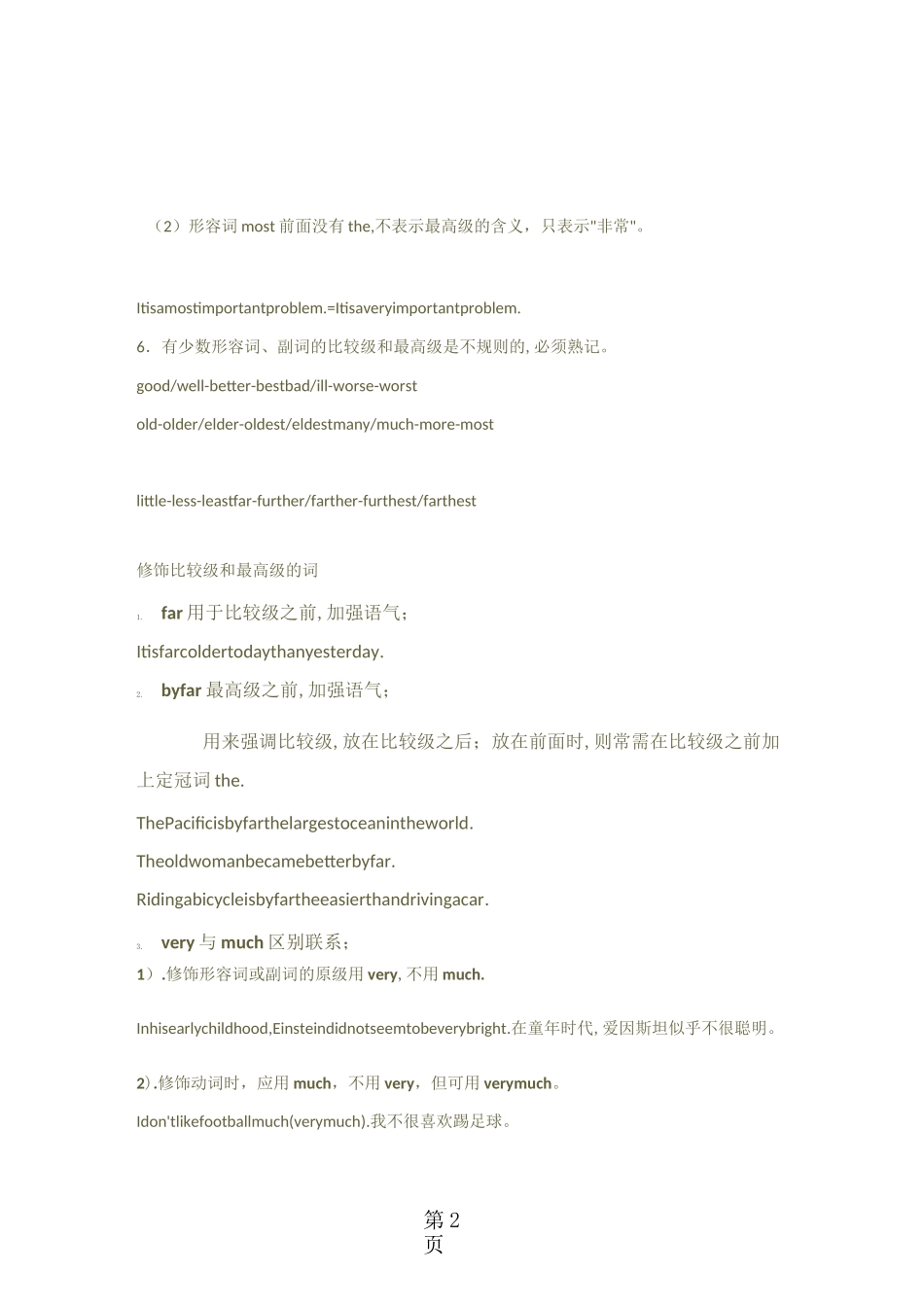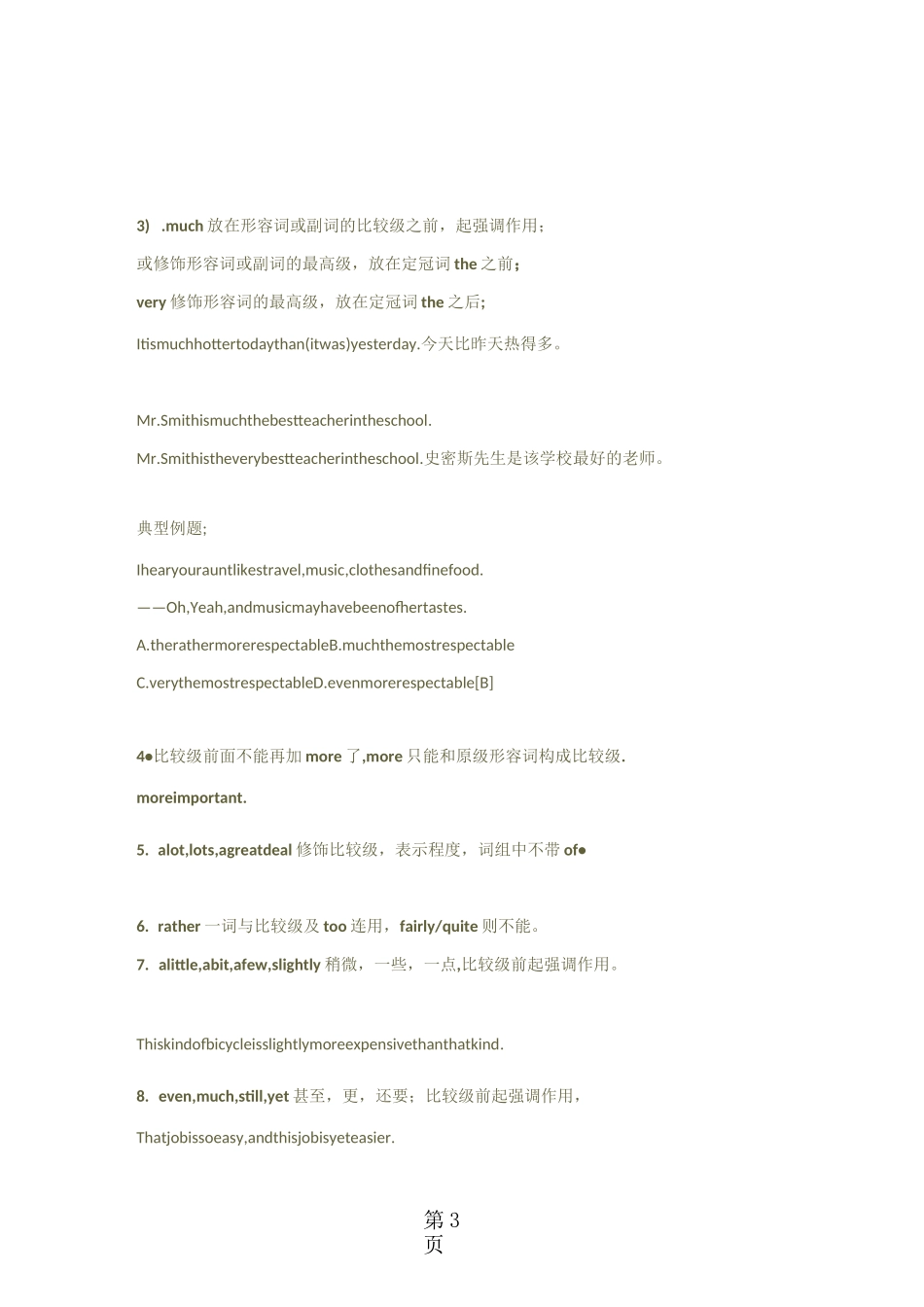第 1页clever—cleverer—cleverest1.一般单音节词和少数以-narrow—narrower—narrowestlarge—larger—largestnice—nicer—nicest比较级最高级语法总结比较级的相关用法;形容词、副词的比较级和最高级的构成规则-ow 结尾的双音节词,比较级在后面加-er,最高级在后面加-est;1)单音节词small—smaller—smallestshort—shorter—shortesttall—taller—tallestgreat—greater—greatest2)双音节词2.以不发音 e 结尾的单音节词,比较在原级后加-r,最高级在原级后加-st;able—abler—ablest3. 在重读闭音节(即:辅音+元音+辅音)中,先双写末尾的辅音字母,比较级加-er,最高级加-est;big—bigger—biggesthot—hotter—hottestfat—fatter—fattest4. 以“辅音字母+y”结尾的双音节词,把 y 改为 i,比较级加-er,最高级加-est;easy—easier—easiestheavy—heavier—heaviestbusy—busier—busiesthappy—happier—happiest5.其他双音节词和多音节词,比较级在前面加 more,最高级在前面加 most;beautiful->morebeautiful->mostbeautifuldifferent—moredifferent—mostdifferenteasily-moreeasily-mosteasily注意:(1)形容词最高级前通常必须用定冠词 the,副词最高级前可不用。TheSaharaisthebiggestdesertintheworld.第 2页(2)形容词 most 前面没有 the,不表示最高级的含义,只表示"非常"。Itisamostimportantproblem.=Itisaveryimportantproblem.6.有少数形容词、副词的比较级和最高级是不规则的,必须熟记。good/well-better-bestbad/ill-worse-worstold-older/elder-oldest/eldestmany/much-more-mostlittle-less-leastfar-further/farther-furthest/farthest修饰比较级和最高级的词1.far 用于比较级之前,加强语气;Itisfarcoldertodaythanyesterday.2.byfar 最高级之前,加强语气;用来强调比较级,放在比较级之后;放在前面时,则常需在比较级之前加上定冠词 the.ThePacificisbyfarthelargestoceanintheworld.Theoldwomanbecamebetterbyfar.Ridingabicycleisbyfartheeasierthandrivingacar.3.very 与 much 区别联系;1).修饰形容词或副词的原级用 very,不用 much.Inhisearlychildhood,Einsteindidnotseemtobeverybright.在童年时代,爱因斯坦似乎不很聪明。2).修饰动词时,应用 much,不用 very,但可用 verymuch。Idon'tlikefootballmuch(verymuch).我不很喜欢踢足球。第 3页3) .much 放在形容词或副...


